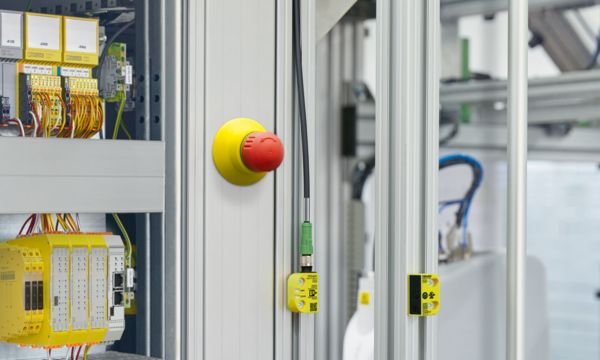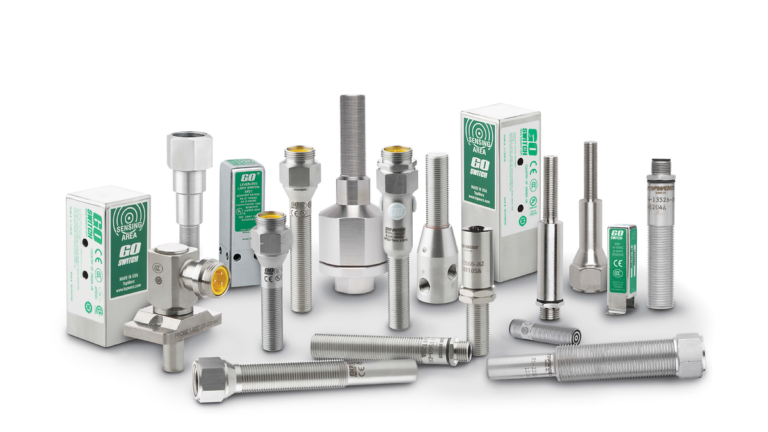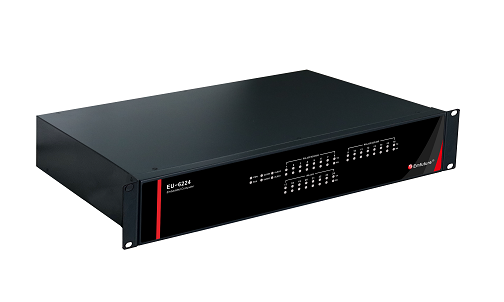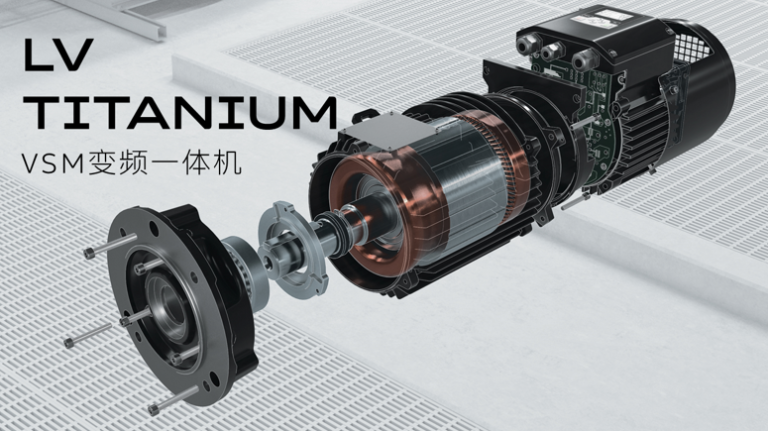Common problem-solving methods for PLC
The reliability of the PLC product itself can be guaranteed, but some incorrect operations in application will cause certain impacts. Today, the editor has sorted out some practical tips for the daily application of PLCS for everyone, hoping to be helpful to you in your daily use of PLCS.
(Ⅰ) Grounding issue
The grounding requirements for PLC systems are quite strict. It is best to have an independent dedicated grounding system. Also, it is necessary to ensure that other equipment related to the PLC is reliably grounded. When multiple circuit grounding points are connected together, unexpected currents will be generated, causing logical errors or damaging the circuits. The reason for generating different grounding potentials is usually that the grounding points are separated too far in the physical area. When devices that are far apart are connected together by communication cables or sensors, the current between the cable and the ground will flow through the entire circuit. Even within a very short distance, the load current of large equipment can also change between its potential and that of the ground. Or generate unpredictable currents directly through electromagnetic effects. Between power sources with incorrect grounding points, there is a possibility of generating devastating currents in the circuit, which may even damage the equipment. PLC systems generally adopt a single-point grounding method. To enhance the ability to resist common-mode interference, for analog signals, the shielded floating ground technology can be adopted. That is, the shielding layer of the signal cable is grounded at one point, the signal loop is floating, and the insulation resistance from the ground should be no less than 50MΩ.
(Ⅱ) Anti-interference treatment
The environment in industrial sites is rather harsh, with numerous high and low frequency interferences. These interferences are generally introduced into the PLC through the cables connected to the on-site equipment. In addition to grounding measures, during the design selection and laying construction of cables, some anti-interference measures should be noted:
Analog signals are small signals and are highly susceptible to external interference. Double-layer shielded cables should be selected.
(2) For high-speed pulse signals (such as pulse sensors, digital disks of computers, etc.), shielded cables should be selected to prevent both external interference and the interference of high-speed pulse signals on low-level signals.
(3) The communication cables between PLCS have a relatively high frequency. Generally, cables provided by the manufacturer should be selected. In cases where the requirements are not high, shielded twisted-pair cables can be chosen.
(4) Analog signal lines and DC signal lines must not be routed in the same conduit as AC signal lines.
(5) The shielded cables introduced and led out of the control cabinet must be grounded and should be directly connected to the equipment without going through the terminal blocks.
(6) AC signals, DC signals and analog signals should not share one cable. Power cables should be laid separately from signal cables.
(7) During on-site maintenance, the methods to address interference include: using shielded cables for the interfered lines and re-laying them; Add anti-interference filtering code to the program.
(Ⅲ) Eliminate inter-line capacitance to prevent misoperation
There is capacitance between each conductor of the cable. A qualified cable can limit this capacitance value within a certain range. Even for qualified cables, when the cable length exceeds a certain limit, the capacitance value between each line will also exceed the required value. When this cable is used for PLC input, the capacitance between the lines may cause the PLC to malfunction, resulting in many incomprehensible phenomena. These phenomena are mainly manifested as follows: Even though the wiring is correct, the PLC has no input. The inputs that a PLC should have are absent, while those that it shouldn’t have are present, meaning that the PLC inputs interfere with each other. To solve this problem, the following should be done:
(1) Cables with cable cores twisted together;
(2) Try to shorten the length of the cables used as much as possible;
(3) Use cables separately for mutually interfering inputs;
(4) Use shielded cables.
(Ⅳ) Selection of Output modules
The output module is divided into transistor, bidirectional thyristor and relay types:
The transistor type has the fastest switching speed (generally 0.2ms), but the smallest load capacity, approximately 0.2 to 0.3A, 24VDC. It is suitable for devices that require rapid switching and signal connection, and is usually connected to signals such as frequency converters and DC devices. Attention should be paid to the impact of transistor leakage current on the load.
(2) The advantages of the thyristor type are that it is contactless, has AC load characteristics, and has a relatively small load capacity.
(3) The relay output features both AC and DC load characteristics and has a large load capacity. In conventional control, relay contact type output is generally selected first. The disadvantage is that the switching speed is slow, usually around 10ms, and it is not suitable for high-frequency switching applications.
(V) Overvoltage and overcurrent handling of frequency converters
(1)When the given speed is reduced to slow down the motor, the motor enters the regenerative power generation braking state. The energy fed back by the motor to the frequency converter is also relatively high. This energy is stored in the filter capacitor, causing the voltage across the capacitor to rise and quickly reach the set value for DC overvoltage protection, resulting in the frequency converter tripping.
The solution is to take the measure of adding a braking resistor outside the frequency converter, and use this resistor to consume the regenerative electrical energy fed back by the motor to the DC side.
(2) The frequency converter drives multiple small motors. When an overcurrent fault occurs in one of the small motors, the frequency converter will trigger an overcurrent fault alarm, causing the frequency converter to trip and thus the other normal small motors to stop working as well.
The solution is to install a 1:1 isolation transformer on the output side of the frequency converter. When an overcurrent fault occurs in one or several small motors, the fault current will directly impact the transformer instead of the frequency converter, thereby preventing the frequency converter from tripping. After the experiment, it worked well and the previous fault of the normal motor also shutting down did not occur again.
(Ⅵ) Mark the input and output for convenient maintenance
The PLC controls a complex system. What can be seen are two rows of staggered input and output relay terminals, corresponding indicator lights and PLC numbers, just like an integrated circuit with dozens of pins. Anyone who attempts to repair faulty equipment without looking at the schematic diagram will be at a loss and the speed of finding the fault will be particularly slow. In view of this situation, we draw a table based on the electrical schematic diagram and stick it on the control console or control cabinet of the equipment, marking the number of each PLC input and output terminal and the corresponding electrical symbol, Chinese name, that is, the function description of each pin similar to an integrated circuit. With this input and output table, electricians who understand the operation process or are familiar with the ladder diagram of this equipment can start maintenance. However, for those electricians who are not familiar with the operation process and cannot read ladder diagrams, they need to draw another table: the logic function table of PLC input and output. This table actually illustrates the logical correspondence between the input circuit (trigger element, associated element) and the output circuit (actuating element) in most operation processes. Practice has proved that if you can skillfully utilize the input-output correspondence table and the input-output logic function table, you can easily and freely repair electrical faults without carrying drawings.
(Ⅶ) Infer faults through program logic
Nowadays, there are various types of PLCS frequently used in industry. For low-end PLCS, the ladder diagram instructions are largely similar. However, for mid-to-high-end machines such as the S7-300, many programs are written in sentence tables. Practical ladder diagrams must be annotated with Chinese symbols; otherwise, it will be very difficult to read. If one can have a general understanding of the equipment process or operation procedure before looking at the ladder diagram, it will be easier to read. If an electrical fault analysis is to be conducted, the reverse lookup method or reverse deduction method is generally applied. That is, based on the input-output correspondence table, the output relay corresponding to the PLC is found from the fault point, and the logical relationship that meets its operation is then traced back. Experience shows that once a problem is identified, the fault can basically be eliminated, as it is rare for equipment to have two or more fault points simultaneously.
(Ⅷ) Fault Diagnosis of PLC itself
Generally speaking, PLCS are extremely reliable devices with a very low failure rate. The probability of hardware damage such as PLCS and cpus or software operation errors is almost zero. If the input points of PLCS are not caused by strong electrical intrusion, they will hardly be damaged either. The normally open points of PLC output relays, unless there is a short circuit in the peripheral load or the design is unreasonable, and the load current exceeds the rated range, The lifespan of the contacts is also very long. Therefore, when we look for electrical fault points, the focus should be on the peripheral electrical components of the PLC. We should not always suspect that there is a problem with the PLC hardware or program. This is very important for quickly repairing the faulty equipment and quickly resuming production. Therefore, the electrical fault inspection of the PLC control circuit discussed by the author does not focus on the PLC itself. Rather, it is the peripheral electrical components in the circuit controlled by the PLC.
(IX) Make full and rational use of software and hardware resources
(1) Instructions that do not participate in the control cycle or have been input before the cycle do not need to be connected to the PLC.
(2) When multiple instructions control a task, they can be connected in parallel outside the PLC first and then connected to an input point.
(3) Make full use of the internal functional software components of the PLC, fully invoke the intermediate states, and make the program complete and coherent, which is easy to develop. It also reduces hardware investment and lowers costs.
(4) When conditions permit, it is best to have each output channel independently, which is convenient for control and inspection and also protects other output circuits. When a fault occurs at one output point, it will only lead to the loss of control of the corresponding output circuit.
(5) If the output is a load controlled in both forward and reverse directions, not only should it be interlocked from the internal program of the PLC, but also measures should be taken externally to prevent the load from moving in both directions.
(6) The emergency stop of the PLC should be cut off by an external switch to ensure safety.
(10) Other precautions
(1) Do not connect the AC power cord to the input terminal to avoid burning out the PLC.
(2) The grounding terminal should be independently grounded and not connected in series with the grounding terminals of other equipment. The cross-sectional area of the grounding wire should not be less than 2mm².
(3) The auxiliary power supply has a relatively small power and can only drive low-power equipment (such as photoelectric sensors, etc.).
(4) Some PLCS have a certain number of occupied points (i.e., empty address terminal blocks). Do not connect the wires.
(5) Fuses and other protective devices should be used in series in the external circuit to prevent damage caused by short circuits in the load.






